Can we chant Lalitha Sahasranamam during periods?
The Lalitha Sahasranamam, a powerful stotra that unfolds a thousand names of the Divine Mother Lalitha, resonates with devotees across the world. But a question often arises – can this transformative practice be observed during menstruation? Let’s embark on a journey through tradition and spiritual understanding to find clarity.
Rooted in Ancient Wisdom
सर्वज्ञा सर्वेश्वरी सर्वानन्दा त्रिपुरसुन्दरी।
यास्याः स्वरूपं न जानाति स एव मूढमतिः॥
Shree Lalitha Tripurasundari is omniscient, the supreme ruler, the embodiment of all bliss. One who does not understand her true form is indeed a fool.
शक्तिः शिवस्य परमा त्रिपुरसुन्दरी जगन्मयी।
सर्वान् कामान् वरदा सर्वपापहरा च सा॥
Lalitha Tripurasundari is the highest Shakti of Shiva. She is the embodiment of the universe, the bestower of all desires, and the destroyer of all sins.
त्रिपुरा सुन्दरी साक्षात् परब्रह्म स्वरूपिणी।
अनादि अनन्ता चैव सर्वेश्वरी त्रिलोचनी॥
Lalitha Tripurasundari is the embodiment of the supreme Brahman itself. She is without beginning and without end, the ruler of all.
अखण्ड ज्योतिर्मयी सर्वमङ्गलमयी च सा।
सर्वज्ञानमयी चैव सर्वेश्वरी त्रिपुरसुन्दरी॥
She is the embodiment of unbroken light, the embodiment of all auspiciousness. She is also the embodiment of all knowledge and the supreme ruler.
अष्टादशभ भुवनानां कारणं परमेश्वरी।
त्रिपुरसुन्दरी साक्षात् सर्वमन्त्रस्वरूपिणी॥
Lalitha Tripurasundari is the cause of the eighteen worlds. She is the supreme goddess and the embodiment of all mantras themselves.
The Lalitha Sahasranama, meaning “the thousand names of Maa Lalitha,” finds its origins in Brahmanda Purana. This revered scripture, one of the eighteen Mahapuranas, contains a section dedicated to Lalitha Tripurasundari, a manifestation of the Shakti.
Legend has it that the sage Agastya Rishi, upon receiving divine guidance, revealed the Lalitha Sahasranama to Hayagriva, an incarnation of Lord Vishnu. Hayagriva then transmitted this sacred hymn to the Devas, who in turn imparted it to humanity for their spiritual upliftment.
The Lalitha Sahasranama celebrates the glory and attributes of Lalitha Tripurasundari, depicting her as the supreme consciousness, the embodiment of beauty, compassion, and divine grace. Each of the thousand names extols a unique aspect of her divine nature, invoking blessings, protection, and spiritual elevation for the devotee. Its profound verses encapsulate the essence of tantra, bhakti, and vedic wisdom, offering seekers a pathway to transcendence, inner peace, and divine realization.
Power of Lalitha Sahasranamam
ललिता सहस्त्रनाम जपे सततमायुषः।
सार्वसिद्धिं नमस्कृत्य पठित्वा यदि यत्नतः॥
Chanting Lalitha Sahasranamam regularly bestows long life. By reverentially reciting it and making efforts, all accomplishments are attained.
ललिता सहस्रनामं पठन्ति ये सदा शिवाः।
सर्वरोगनिवारिणी सदा रक्षां करोति ते॥
Those who regularly recite Lalitha Sahasranamam are always auspicious, they ward off all diseases and are perpetually protected.
ललिता सहस्रनामं स्तोत्रं जपेत् साधकः।
तस्य सर्वाणि कामानि सिध्दिर्भवति निश्चितम्॥
The practitioner who chants Lalitha Sahasranamam, Attains all desires and assuredly achieves success.
Chanting these names isn’t just a beautiful melody; it’s a potent tool for spiritual growth, inner peace, and the invocation of powerful blessings. Here’s a glimpse into the multifaceted benefits of chanting the Lalitha Sahasranamam:
Inner Transformation: Each name within the Lalitha Sahasranamam unveils a unique facet of the Divine Mother. By chanting them with devotion, practitioners invoke these qualities within themselves. This can lead to personal transformation, cultivating qualities like wisdom, strength, and inner peace.
Dissolving Obstacles: The Lalitha Sahasranamam is believed to possess the power to remove obstacles on one’s spiritual path. Whether facing personal or professional challenges, chanting these names can invoke the Divine Mother’s blessings, paving the way for a smoother journey.
Fulfilling Desires: Many devotees chant the Lalitha Sahasranamam to fulfill their deepest desires. The potent energy of the names is believed to attract positive circumstances and blessings, aligning the practitioner with their goals.
Healing and Wellbeing: The Lalitha Sahasranamam is often associated with promoting physical and mental wellbeing. The act of chanting itself fosters a sense of calm and focus, which can have a positive impact on mental health. Additionally, some traditions believe that chanting these names can invoke the Divine Mother’s healing energy.
Spiritual Awakening: For those on a dedicated spiritual path, the Lalitha Sahasranamam can be a powerful tool for awakening. By chanting with devotion, one can deepen their connection with the Shakti, fostering a sense of inner peace, devotion, and ultimately, spiritual awakening.
Mantra Recitation During Menstruation
नारी त्वं श्रद्धया युक्ता स्नात्वा नित्यं जपेत् पुनः।
मन्त्राणां शक्तिरित्येव न स्पृशेद्दोषकं कदा॥
A woman, endowed with faith, should always recite mantras after bathing, for the power of mantras is such that no impurity can ever touch it.
नास्ति सुतका स्त्रीणां रजस्वलानां च भक्तितः।
भक्त्या परमया युक्ता यदा यत्राभ्युपस्थिताः॥
There is no impurity in women due to childbirth or menstruation when they are filled with devotion. Wherever and whenever they are present with supreme devotion, they are pure.
भक्त्या संप्रवृत्यैव नारीणां नैव दूषणम्।
रजःकालमपि प्राप्य सदा पूज्यन्ति तत्पराः॥
Women devoted to worship have no impurity, even during their menstrual periods. They are always worthy of reverence.
न स्त्रीणां रजसा दोषो न मरणेन जायते।
भक्त्या परमया युक्ता यदा यत्राभ्युपस्थिताः॥
There is no fault in women due to menstruation or death. They are pure whenever they are filled with supreme devotion.
There are varying perspectives on reciting mantras, including the Lalitha Sahasranamam, during menstruation. Here’s a breakdown of some key considerations:
Advanced Sadhakas:
For highly realized spiritual practitioners (sadhakas) who have attained an elevated state of consciousness, menstruation doesn’t hinder their spiritual practices, including mantra recitation. However, this level of spiritual attainment is uncommon, and such practitioners are adept at navigating their practices seamlessly.
Common Practitioners:
For most devotees, who haven’t reached such advanced states, tradition recommends refraining from reciting mantras in temples or sacred spaces during menstruation. This stems from the belief that menstrual blood represents the potent creative energy of the Divine Mother. To preserve the sanctity of puja rituals performed in temples, some traditions suggest avoiding the mingling of this energy with sacred practices.
Mantra Diksha: A Disciple’s Privilege
If a devotee has received mantra diksha (initiation) for a specific mantra from a guru, they may be permitted to continue reciting it during menstruation with the guru’s guidance. Mantra diksha establishes a special spiritual bond between the disciple and the guru, empowering the disciple to continue their sadhana under the guru’s blessings.
Without Mantra Diksha: A Personal Practice
For those who haven’t received mantra diksha, the option of chanting the Lalitha Sahasranamam during menstruation still exists. However, it’s recommended to do so in a quiet, comfortable space outside the pooja room or temple. This allows for a focused and personal practice of chanting (japa) as a form of individual sadhana.
Beyond Restrictions: The Essence of Devotion
Ultimately, the true essence of spiritual practice lies in devotion. Whether chanting the Lalitha Sahasranamam during menstruation or finding alternative practices for this specific period, devotion and reverence for the Divine Mother are paramount.
A Journey of Personal Exploration
The question of chanting the Lalitha Sahasranamam during menstruation can be approached with an open mind and a spirit of personal exploration. Understanding the traditions and respecting the sacredness of menstruation allows devotees to find their unique path to connect with the Divine Mother during this potent time. Remember, devotion is the key, and finding a way to connect with the Divine Mother, even if it means adapting your practices, is the ultimate goal.


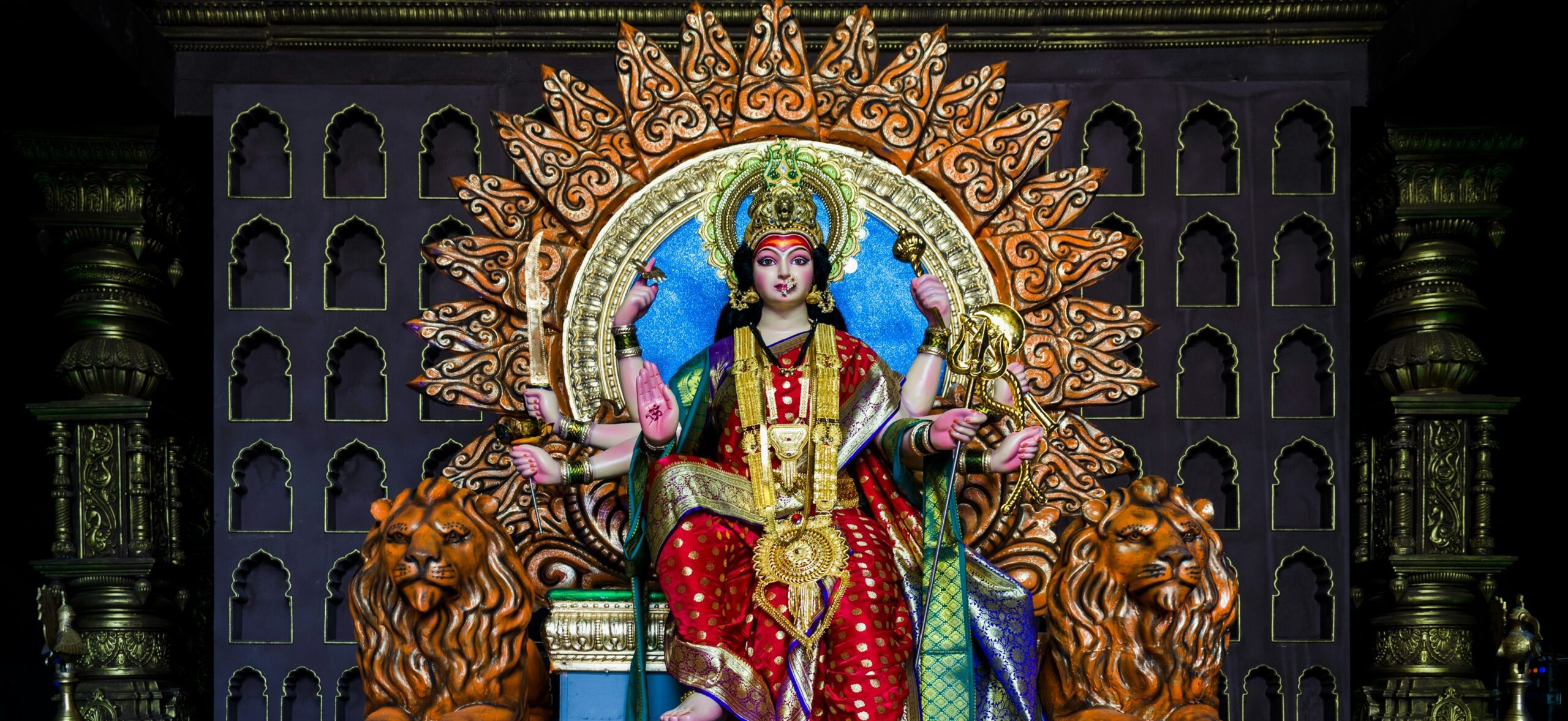
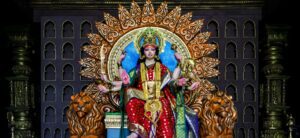
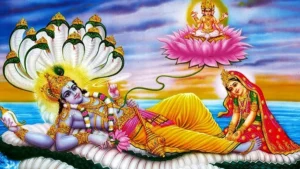
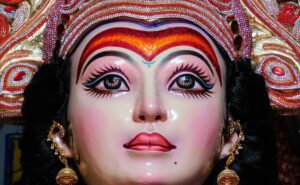
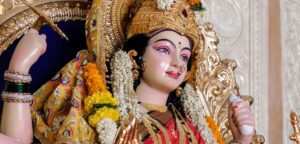
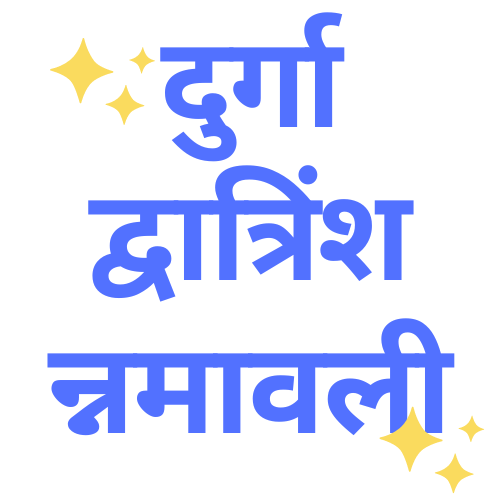


108 Names of Maa Durga